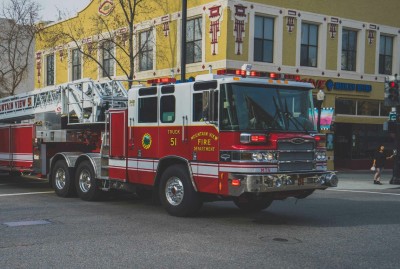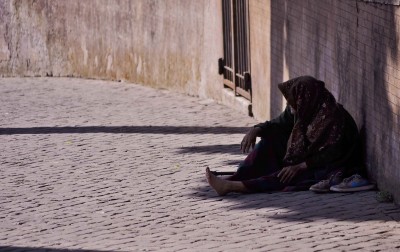 By Susan Braedley, School of Social Work, Carleton University
By Susan Braedley, School of Social Work, Carleton University
Sometimes a turf war hides bigger problems. In a continuing saga between fire fighters and paramedics, the recent flare-up in Ontario over “who does what” is one example. For decades, many municipalities in Canada have seen a steady, dramatic increase in 9-1-1 calls for medical assistance, combined with increasing demand at hospital emergency departments. One result has been inter-service and inter-union rivalries. Recently, the Ontario Professional Fire Fighter’s Association approached the province to propose the creation of a fire-medic program for 9-1-1 medical response. Firefighters are frequently first to arrive, sometimes waiting many minutes with patients who need paramedic support. The Ontario Paramedic Association responded that this is a dangerous idea, arguing that the problem is patient transfer times at hospital emergency rooms that tie up paramedics for hours, waiting for a doctor to assume patient care. Different versions of this disagreement are occurring elsewhere, such as in Vancouver where last December firefighters were waiting up to an hour or more for paramedics, due to new ambulance dispatch protocols. These matters are often reflections of unresolved provincial /municipal jurisdictional and funding disagreements.
But, these disagreements and problems distract from a key question. Why is demand for emergency medical services increasing?
 My vantage point has been on-going research that has me riding along on fire trucks in urban municipalities across Canada, documenting what fire fighters actually do in hundreds of emergency medical responses in order to understand shifts in gendered work and employment equity in the context of fire services’ shift from a primary focus on fire prevention and suppression to a portfolio increasingly dominated by health care-related responses. One of the most significant research findings has not been about firefighters at all, but rather the consistency in the conditions of desperation associated with 9-1-1 medical calls. Most calls were to help people living with insufficient support and care. Medical responses were to help frail people who had fallen and couldn’t get up, such as when they slipped off the toilet, or to check on people who had passed out, often from alcohol and drug misuse, but also due to sleeping outside in the cold. Many responses were to people struggling with disabilities and to help people who were experiencing symptoms related to chronic illness, such as diabetes, epilepsy, Parkinson’s and dementia. I have been told by emergency medical response experts that most of these circumstances were more frightening than life-threatening and therefore “inappropriate” 9-1-1 calls. But these experts examine the health conditions involved with 9-1-1, rather than the circumstances of life that shape these emergencies. While my information was limited to what I could observe or was told, it was clear that many of these so-called inappropriate responses were to people without the “appropriate” resources that these experts seem to take for granted. In my research, the majority of 9-1-1 responses were to people living alone and with limited or no access to care, while a significant number of others lived with those with limited ability to assist, such as a frail elderly spouse or disabled roommate.
My vantage point has been on-going research that has me riding along on fire trucks in urban municipalities across Canada, documenting what fire fighters actually do in hundreds of emergency medical responses in order to understand shifts in gendered work and employment equity in the context of fire services’ shift from a primary focus on fire prevention and suppression to a portfolio increasingly dominated by health care-related responses. One of the most significant research findings has not been about firefighters at all, but rather the consistency in the conditions of desperation associated with 9-1-1 medical calls. Most calls were to help people living with insufficient support and care. Medical responses were to help frail people who had fallen and couldn’t get up, such as when they slipped off the toilet, or to check on people who had passed out, often from alcohol and drug misuse, but also due to sleeping outside in the cold. Many responses were to people struggling with disabilities and to help people who were experiencing symptoms related to chronic illness, such as diabetes, epilepsy, Parkinson’s and dementia. I have been told by emergency medical response experts that most of these circumstances were more frightening than life-threatening and therefore “inappropriate” 9-1-1 calls. But these experts examine the health conditions involved with 9-1-1, rather than the circumstances of life that shape these emergencies. While my information was limited to what I could observe or was told, it was clear that many of these so-called inappropriate responses were to people without the “appropriate” resources that these experts seem to take for granted. In my research, the majority of 9-1-1 responses were to people living alone and with limited or no access to care, while a significant number of others lived with those with limited ability to assist, such as a frail elderly spouse or disabled roommate.
 While 9-1-1 call increases are often attributed to population growth and aging populations, my findings suggest that well-documented changes to health care and social services provision are drivers of demand for 9-1-1 and hospital emergency services. Hospitals discharge people sicker and quicker. Limited “community” care programs have insufficient capacity to help people with mental illness and intellectual disabilities. Problems with home care are in the news continually. Increasingly, health care policies expect family members and paid helpers to do more, including procedures that previously were handled by highly trained nurses and other medical personnel. Further, policies tout “home” as the best and preferred place to be sick or dying. These policies wrongly assume that we all have someone who can afford to, is willing to, and has the abilities to, care for us. They also assume that we can afford and maintain a home that is safe and accessible for us and our carers. When we don’t, someone calls 9-1-1. It is, for some people, both last- ditch and primary care.
While 9-1-1 call increases are often attributed to population growth and aging populations, my findings suggest that well-documented changes to health care and social services provision are drivers of demand for 9-1-1 and hospital emergency services. Hospitals discharge people sicker and quicker. Limited “community” care programs have insufficient capacity to help people with mental illness and intellectual disabilities. Problems with home care are in the news continually. Increasingly, health care policies expect family members and paid helpers to do more, including procedures that previously were handled by highly trained nurses and other medical personnel. Further, policies tout “home” as the best and preferred place to be sick or dying. These policies wrongly assume that we all have someone who can afford to, is willing to, and has the abilities to, care for us. They also assume that we can afford and maintain a home that is safe and accessible for us and our carers. When we don’t, someone calls 9-1-1. It is, for some people, both last- ditch and primary care.
Some fire services and paramedic services are beginning to recognize that they can do more, such as the EPIC pilot program at Winnipeg Fire-Paramedic Services. This program deploys advanced care paramedics to address the conditions of care for some of Winnipeg’s most vulnerable citizens, successfully reducing 9-1-1 calls while ensuring support and care. Programs like EPIC are the new face of Canada’s current “austere” social welfare regime – a promising sign in a bleak landscape.
9-1-1 medical calls can tell us a lot about how our systems of health care and social services are succeeding or failing. Emergency responders can use their street level knowledge and significant clout to help address the challenges, especially if they collaborate. Proposals may vary, with developments such as fire-medics, as is common in Manitoba and Alberta, or more community, advanced care and other specialized paramedics. They could include mobile health care or social services units and other solutions. Firefighters and paramedics should be part of the answer, but not the only answer. A turf war is just a distraction.
(Susan Braedley’s research is funded by the Social Sciences and Humanities Research Council. She has no affiliation or commitment to firefighters or paramedicine.)
For a related story, see the Toronto Star interview with Dr. Braedley.
9-1-1 image courtesy of Stuart Miles at FreeDigitalPhotos.net